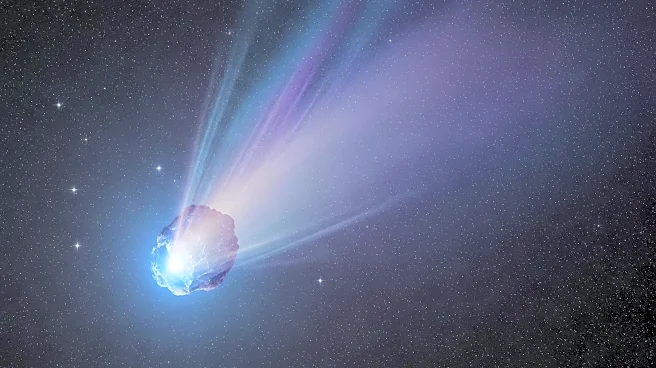What's Happening?
NASA's Perseverance rover has made a significant discovery on Mars, identifying minerals in the Jezero Crater that may suggest past life. The rover found an arrowhead-shaped rock, named Cheyava Falls, with markings rich in organic carbon, iron, phosphorus, and sulfur. These minerals, vivianite and greigite, typically form through redox reactions, which are essential for life processes on Earth. While these findings are not definitive proof of life, they offer a new perspective on Mars' chemical environment, which differs from previous observations. Scientists are intrigued by the possibility that these reactions could have supported life on Mars, similar to processes on Earth.
Why It's Important?
The discovery of redox reactions on Mars is crucial as it opens up the possibility of life having existed on the planet. These reactions are a fundamental source of energy for life forms on Earth, suggesting that Mars might have had similar conditions conducive to life. The findings could reshape our understanding of Mars' history and its potential to harbor life. This discovery also highlights the importance of returning samples to Earth for further analysis, which could provide more definitive evidence of past life on Mars. The implications for astrobiology and the search for extraterrestrial life are profound, potentially guiding future missions and research.
What's Next?
NASA plans to return samples from Mars to Earth for detailed analysis, although the Mars Sample Return mission faces challenges such as delays and budget constraints. Scientists are eager to conduct isotopic measurements on the samples to determine if biological processes were involved in the formation of the minerals. The results could provide clearer evidence of life on Mars, influencing future exploration strategies. The scientific community is closely watching these developments, as they could lead to groundbreaking discoveries in the field of astrobiology.
Beyond the Headlines
The discovery raises questions about the potential for life on other planets and the conditions necessary for life to thrive. It challenges scientists to consider non-biological processes that might mimic life signatures, emphasizing the need for careful analysis to avoid false positives. The findings also contribute to our understanding of Mars' climate history, suggesting that the planet's environment has undergone significant changes over time.











